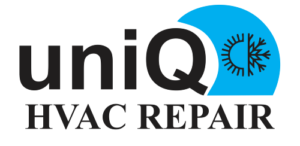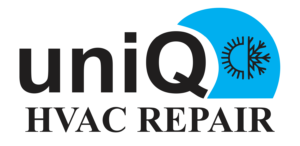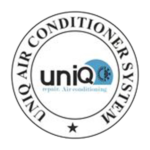AC Not Cooling – Causes and Sol Troubleshooting Guidutions
An air conditioner (AC) that fails to cool your home during the scorching heat of summer can be a source of discomfort and frustration. When your AC isn’t cooling properly, it’s essential to diagnose the problem correctly and implement the necessary solutions. In this comprehensive guide, we will explore the common reasons why an AC might not be cooling, step-by-step troubleshooting, and potential DIY fixes to restore your cooling system’s performance. By understanding the possible causes and solutions for an AC not cooling, you can enjoy a comfortable and refreshing indoor environment without delay.
Table of Contents
- The Importance of a Cool and Comfortable Home (200 words)
- The role of air conditioning in indoor comfort
- Benefits of a well-functioning AC system
- Impact on health and well-being
- Energy efficiency and cost savings
- Common Reasons Why Your AC Isn’t Cooling (250 words)
- Dirty or clogged air filters
- Refrigerant issues
- Electrical problems
- Thermostat issues
- Inadequate maintenance
- DIY Troubleshooting for an AC That Isn’t Cooling (300 words)
- Step 1: Check the Thermostat Settings
- Step 2: Inspect the Air Filters
- Step 3: Clean the Condenser Unit
- Step 4: Check for Refrigerant Leaks
- Step 5: Inspect the Evaporator Coil
- Step 6: Verify the Electrical Connections
- Step 7: Examine the Ductwork
- When to Seek Professional Help (250 words)
- Complex refrigerant issues
- Compressor or motor problems
- Electrical issues beyond DIY troubleshooting
- Warranty considerations
- Preventive Measures for Maintaining a Cool Home (200 words)
- Regular professional HVAC maintenance
- Changing air filters regularly
- Keeping the outdoor unit clean
- Upgrading to a programmable thermostat
- Conclusion (100 words)
- The importance of a well-functioning AC system for indoor comfort
- The value of proactive troubleshooting and maintenance
- Enjoying a cool and refreshing indoor environment.
1. The Importance of a Cool and Comfortable Home
A cool and comfortable home is essential for your well-being and overall quality of life. Here’s why a cool indoor environment is vital:
The Role of Air Conditioning in Indoor Comfort: Air conditioning systems help maintain comfortable indoor temperatures, making your home a refuge from the heat.
Benefits of a Well-Functioning AC System: A well-functioning AC system not only cools your home but also improves indoor air quality and humidity levels.
Impact on Health and Well-Being: Excessive heat can lead to health issues like heat exhaustion or heatstroke. A properly functioning AC system can help protect you and your family from these risks.
Energy Efficiency and Cost Savings: A well-maintained AC system operates efficiently, reducing energy consumption and lowering your utility bills.
When your AC isn’t cooling as it should, addressing the problem promptly is essential to maintain a comfortable and healthy living environment.
2. Common Reasons Why Your AC Isn’t Cooling
There are several common reasons why your AC might not be cooling effectively:
Dirty or Clogged Air Filters: Dirty or clogged air filters can restrict airflow, reducing the cooling capacity of your AC system.
Refrigerant Issues: Low refrigerant levels due to leaks can cause your AC to lose its cooling power.
Electrical Problems: Faulty electrical components or connections within the AC system can disrupt cooling.
Thermostat Issues: A malfunctioning or improperly set thermostat can lead to improper cooling.
Inadequate Maintenance: Neglecting regular maintenance can result in dirty coils, reduced efficiency, and cooling problems.
Now, let’s explore each of these issues in detail and discuss how to troubleshoot them.
3. DIY Troubleshooting for an AC That Isn’t Cooling
Before contacting a professional technician, you can perform some DIY troubleshooting to identify and potentially resolve the issue:
Step 1: Check the Thermostat Settings:
- Ensure the thermostat is set to the “Cool” mode and that the temperature setting is lower than the current room temperature.
- Test the thermostat by setting it a few degrees lower to see if the AC starts cooling.
Step 2: Inspect the Air Filters:
- Check the air filters in your AC unit. If they are dirty or clogged, they can restrict airflow and reduce cooling efficiency. Replace or clean the filters as needed.
Step 3: Clean the Condenser Unit:
- Inspect the outdoor condenser unit for dirt, debris, or vegetation that might be blocking airflow. Clean the unit and the surrounding area.
Step 4: Check for Refrigerant Leaks:
- Inspect the AC unit and refrigerant lines for visible signs of refrigerant leaks, such as oily spots or frost accumulation. If you suspect a leak, contact a professional technician to locate and repair it before recharging the refrigerant.
Step 5: Inspect the Evaporator Coil:
- Check the indoor evaporator coil for dirt or ice buildup. If it’s dirty, clean it carefully. If it’s frozen, turn off the AC and let it thaw before restarting.
Step 6: Verify the Electrical Connections:
- Carefully inspect the wiring and electrical connections within the AC unit. Look for loose or disconnected wires. If you find any, consult a professional technician to address the issue safely.
Step 7: Examine the Ductwork:
- Inspect the ductwork for any visible damage or disconnected sections. Leaky ducts can significantly reduce cooling efficiency. Seal any leaks or hire a professional to repair damaged ducts.
By following these troubleshooting steps, you can often identify and resolve simple issues that prevent your AC from cooling effectively.
4. When to Seek Professional Help
While DIY troubleshooting can resolve some AC issues, certain situations require professional assistance:
Complex Refrigerant Issues: Diagnosing and repairing refrigerant leaks and recharging the refrigerant should be left to a licensed technician due to the safety hazards and technical expertise required.
Compressor or Motor Problems: If the compressor or motor fails, it typically requires professional diagnosis and replacement.
Electrical Issues Beyond DIY Troubleshooting: If you encounter complex electrical problems or suspect a wiring issue, it’s best to leave the diagnosis and repair to a licensed technician.
Warranty Considerations: If your AC unit is still under warranty, attempting DIY repairs or hiring an unqualified technician may void the warranty. Always consult the manufacturer’s guidelines and seek professional help when necessary.
5. Preventive Measures for Maintaining a Cool Home
To prevent future AC cooling issues, consider the following preventive measures:
Regular Professional HVAC Maintenance: Schedule annual HVAC maintenance with a qualified technician to ensure your AC system remains in good working condition.
Changing Air Filters Regularly: Replace or clean air filters regularly to maintain proper airflow and cooling efficiency.
Keeping the Outdoor Unit Clean: Regularly clean the outdoor condenser unit and the area around it to ensure optimal airflow.
Upgrading to a Programmable Thermostat: Consider installing a programmable
An air conditioner (AC) that fails to cool your home during the scorching heat of summer can be a source of discomfort and frustration. When your AC isn’t cooling properly, it’s essential to diagnose the problem correctly and implement the necessary solutions. In this comprehensive guide, we will explore the common reasons why an AC might not be cooling, step-by-step troubleshooting, and potential DIY fixes to restore your cooling system’s performance. By understanding the possible causes and solutions for an AC not cooling, you can enjoy a comfortable and refreshing indoor environment without delay.
Table of Contents
- The Importance of a Cool and Comfortable Home (200 words)
- The role of air conditioning in indoor comfort
- Benefits of a well-functioning AC system
- Impact on health and well-being
- Energy efficiency and cost savings
- Common Reasons Why Your AC Isn’t Cooling (250 words)
- Dirty or clogged air filters
- Refrigerant issues
- Electrical problems
- Thermostat issues
- Inadequate maintenance
- DIY Troubleshooting for an AC That Isn’t Cooling (300 words)
- Step 1: Check the Thermostat Settings
- Step 2: Inspect the Air Filters
- Step 3: Clean the Condenser Unit
- Step 4: Check for Refrigerant Leaks
- Step 5: Inspect the Evaporator Coil
- Step 6: Verify the Electrical Connections
- Step 7: Examine the Ductwork
- When to Seek Professional Help (250 words)
- Complex refrigerant issues
- Compressor or motor problems
- Electrical issues beyond DIY troubleshooting
- Warranty considerations
- Preventive Measures for Maintaining a Cool Home (200 words)
- Regular professional HVAC maintenance
- Changing air filters regularly
- Keeping the outdoor unit clean
- Upgrading to a programmable thermostat
- Conclusion (100 words)
- The importance of a well-functioning AC system for indoor comfort
- The value of proactive troubleshooting and maintenance
- Enjoying a cool and refreshing indoor environment.
1. The Importance of a Cool and Comfortable Home
A cool and comfortable home is essential for your well-being and overall quality of life. Here’s why a cool indoor environment is vital:
The Role of Air Conditioning in Indoor Comfort: Air conditioning systems help maintain comfortable indoor temperatures, making your home a refuge from the heat.
Benefits of a Well-Functioning AC System: A well-functioning AC system not only cools your home but also improves indoor air quality and humidity levels.
Impact on Health and Well-Being: Excessive heat can lead to health issues like heat exhaustion or heatstroke. A properly functioning AC system can help protect you and your family from these risks.
Energy Efficiency and Cost Savings: A well-maintained AC system operates efficiently, reducing energy consumption and lowering your utility bills.
When your AC isn’t cooling as it should, addressing the problem promptly is essential to maintain a comfortable and healthy living environment.
2. Common Reasons Why Your AC Isn’t Cooling
There are several common reasons why your AC might not be cooling effectively:
Dirty or Clogged Air Filters: Dirty or clogged air filters can restrict airflow, reducing the cooling capacity of your AC system.
Refrigerant Issues: Low refrigerant levels due to leaks can cause your AC to lose its cooling power.
Electrical Problems: Faulty electrical components or connections within the AC system can disrupt cooling.
Thermostat Issues: A malfunctioning or improperly set thermostat can lead to improper cooling.
Inadequate Maintenance: Neglecting regular maintenance can result in dirty coils, reduced efficiency, and cooling problems.
Now, let’s explore each of these issues in detail and discuss how to troubleshoot them.
3. DIY Troubleshooting for an AC That Isn’t Cooling
Before contacting a professional technician, you can perform some DIY troubleshooting to identify and potentially resolve the issue:
Step 1: Check the Thermostat Settings:
- Ensure the thermostat is set to the “Cool” mode and that the temperature setting is lower than the current room temperature.
- Test the thermostat by setting it a few degrees lower to see if the AC starts cooling.
Step 2: Inspect the Air Filters:
- Check the air filters in your AC unit. If they are dirty or clogged, they can restrict airflow and reduce cooling efficiency. Replace or clean the filters as needed.
Step 3: Clean the Condenser Unit:
- Inspect the outdoor condenser unit for dirt, debris, or vegetation that might be blocking airflow. Clean the unit and the surrounding area.
Step 4: Check for Refrigerant Leaks:
- Inspect the AC unit and refrigerant lines for visible signs of refrigerant leaks, such as oily spots or frost accumulation. If you suspect a leak, contact a professional technician to locate and repair it before recharging the refrigerant.
Step 5: Inspect the Evaporator Coil:
- Check the indoor evaporator coil for dirt or ice buildup. If it’s dirty, clean it carefully. If it’s frozen, turn off the AC and let it thaw before restarting.
Step 6: Verify the Electrical Connections:
- Carefully inspect the wiring and electrical connections within the AC unit. Look for loose or disconnected wires. If you find any, consult a professional technician to address the issue safely.
Step 7: Examine the Ductwork:
- Inspect the ductwork for any visible damage or disconnected sections. Leaky ducts can significantly reduce cooling efficiency. Seal any leaks or hire a professional to repair damaged ducts.
By following these troubleshooting steps, you can often identify and resolve simple issues that prevent your AC from cooling effectively.
4. When to Seek Professional Help
While DIY troubleshooting can resolve some AC issues, certain situations require professional assistance:
Complex Refrigerant Issues: Diagnosing and repairing refrigerant leaks and recharging the refrigerant should be left to a licensed technician due to the safety hazards and technical expertise required.
Compressor or Motor Problems: If the compressor or motor fails, it typically requires professional diagnosis and replacement.
Electrical Issues Beyond DIY Troubleshooting: If you encounter complex electrical problems or suspect a wiring issue, it’s best to leave the diagnosis and repair to a licensed technician.
Warranty Considerations: If your AC unit is still under warranty, attempting DIY repairs or hiring an unqualified technician may void the warranty. Always consult the manufacturer’s guidelines and seek professional help when necessary.
5. Preventive Measures for Maintaining a Cool Home
To prevent future AC cooling issues, consider the following preventive measures:
Regular Professional HVAC Maintenance: Schedule annual HVAC maintenance with a qualified technician to ensure your AC system remains in good working condition.
Changing Air Filters Regularly: Replace or clean air filters regularly to maintain proper airflow and cooling efficiency.
Keeping the Outdoor Unit Clean: Regularly clean the outdoor condenser unit and the area around it to ensure optimal airflow.
Upgrading to a Programmable Thermostat: Consider installing a programmable


 Please enter your name and phone number below, We will get back to you soon.
Please enter your name and phone number below, We will get back to you soon.